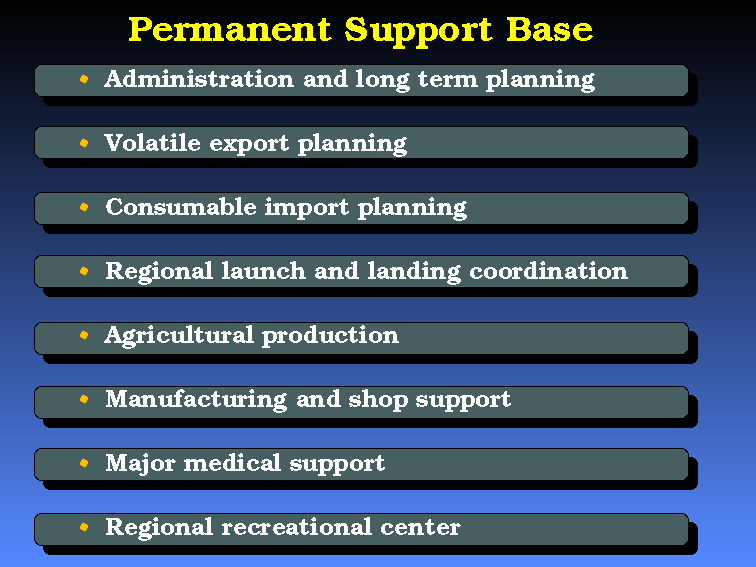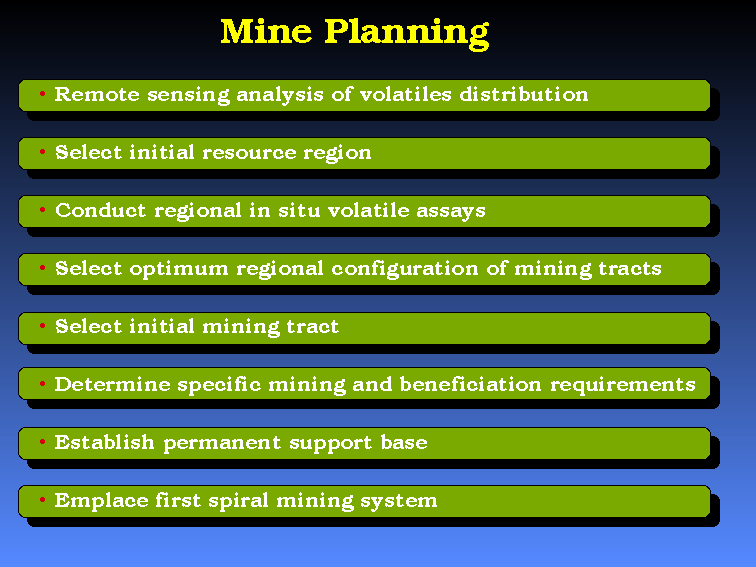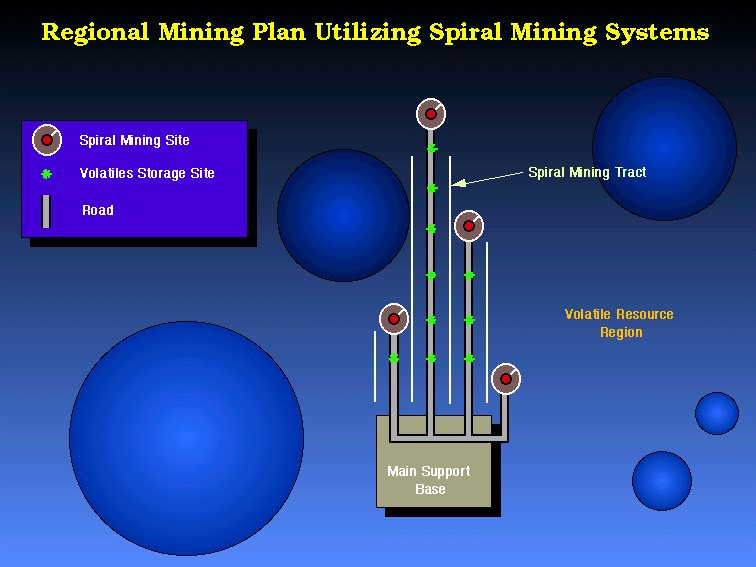NEEP602 Course Notes (Fall 1997)
Resources from Space
Lecture #20: There's Helium in Them Thar Craters!
Title: Lunar Mine Planning
Example of Mining Equipment Designed to Extract Lunar Volatiles-Example
He-3
 |
From lecture #19 it was shown that over 85% of the helium-3 could be removed from ilmenite by heating it to 700°C |
 |
The type of equipment that can accomplish the heating of large amounts of fine grain regolith is shown in the next picture. See Sviatoslavsky (1988) for more details. |
 |
In the process of extracting He-3, many other elements and compounds are produced. |
 |
The "coldness" of outer space can be used to separate the lunar volatiles. |
 |
The characteristics of the Mark-II miner are listed here. |
 |
There are at least 3 major applications for the volatile by-products from Lunar He-3 mining. |
The Life support applications were discussed in lecture 19 and a future lecture on fusion propulsion will discuss their applications in transportation. Here, we will discuss only the possibility to use the by-products for making electricity from H2-O2 fuel cells.
MORE GENERAL MINING CONSTRAINTS
Principal Mining and Beneficiation Constraints
- natural (geological) controls of resource distribution
- predictability of significant variations in host material
- location and influence of blocky-rim craters
- energy requirements to mine and process
- energy source(s) and schedule of availability
- degree of reliable automation possible
- dust control
- working fluids availability if required
- applications of "shaped" explosive excavation
- equipment reliability and durability
- number and skill of human support
- waste "rock" disposal
- location of refining facility
- location of permanent support base
- transportation requirements
Principal Resource Refining Constraints
- predictability of significant variations in "concentrate"
- energy and schedule (lunar night?) requirements
- energy source(s) and schedule of availability
- waste heat recovery technology
- degree of automation possible
- equipment reliability and durability
- amount and skill of human support
- recoverable grade in fines assumed: 45 ppb (assuming that initial mine site selection has maximized recoverable grade relative to age and ilmenite abundance)
- regolith density assumed: 1.5 g/cm3
- usable regolith assumed: 50%
- Surface Bulk Tonnage Continuous Mining (similar to terrestrial bucket wheels, dredges, and draglines)
- Robotic with human intervention and maintenance
- In situ beneficiation and thermal extraction of volatiles
- Waste heat recovery
- Regolith waste disposal in mined track
- Blocky rim craters avoided to average of one crater diameter
- Craters less than 10 meters in diameter destroyed
- No major change in surface albedo expected
Regolith and Pyroclastic Volatiles
- Permanent Base
- Periodically Mobile Base
REGOLITH MINERALS (extraction of metals, oxygen, aggregate,
and sintering material might be combined with regolith volatiles mining)
Pre-heating accomplished
Sorting by size, shape, paramagnetism, electrostatic properties (Agosto, 1985), density, grain roughness, etc. might be inserted into processing
PRIMARY MINERALS (as layers in basalt cooling units)
Underground High Tonnage Mining (similar to terrestrial mining of underground layered deposits, e.g., coal, salt, copper, chromite, platinum, etc.)
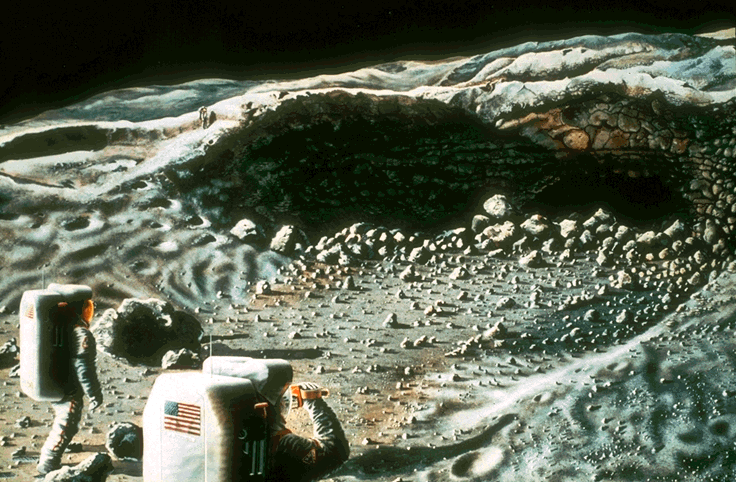 Lava tube (NASA art S88-33546)
Lava tube (NASA art S88-33546)
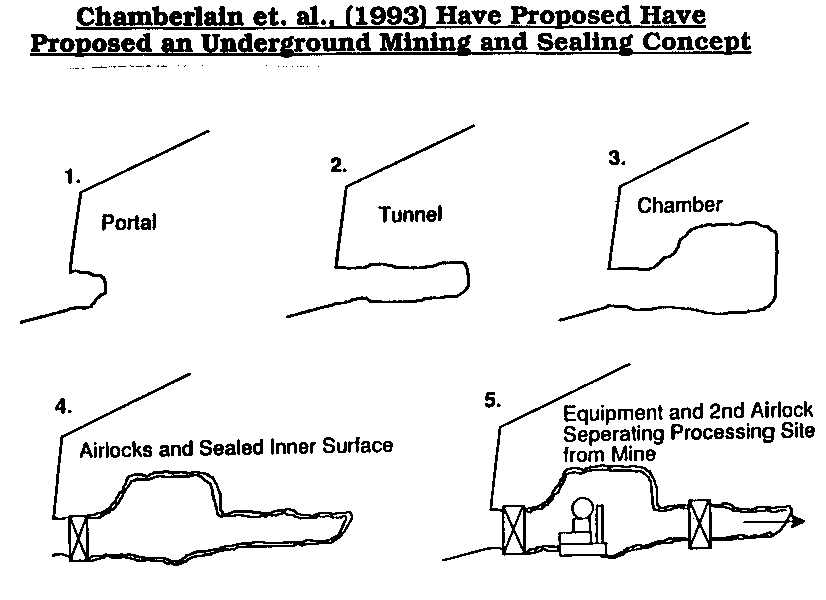 Mining and Sealing Concept (after Chamberlain, et al., 1993)
Mining and Sealing Concept (after Chamberlain, et al., 1993)
- Ore layer location
- impact crater mapping
- seismic and radar tomography
- drilling
- Robotic "long wall" continuous mining with close human intervention
- Existing impact breeciation may both help (pre-crushing) and hinder (caving) mining
- Continuous ore transport to surface with close human intervention
- Long term, continous movement of abrasive material on belts, in buckets, etc. will always be a challenge
- Ore preparation may make beneficiation step, below, sufficiently more
efficient to be cost effective
- final crushing
- H2O, H2 and or He washing?
- surface preparation
- Surface beneficiation and physical-property-based separation
- size fraction (fine from course)
- magnetic susceptibility (ilmenite rich fines from other fines)
- density (ilmente-rich fines from other fines)
- optical properties (pyroclastic glasses and devitrified glasses)
- Waste rock disposal at surface (in craters or as mounds if not useful
as aggregate for roads, etc.)
- Waste disposal will change topography
- Major changes in albedo where waste rock disposed due to grain size differences with normal regolith
NEW INFORMATION REQUIREMENTS FOR OPTIMUM PLANNING
- Access cost analysis for various promising areas of the Moon
- Orbital remote sensing [polar orbit satellite, e.g., INTERLUNE TWO
(see Lecture 42)]
- Surface distribution to within a few meters resolution of the following:
- 3He concentration (gamma ray emission of neutron absorption)
- Blocky crater rims (high resolution photograpy)
- Ti concentration (spectural imaging)
- Three dimensional distribution (radar) to within 1/2 meter depth of
the following:
- Depth of regolith
- Block concentrations
- Density
- Surface distribution to within a few meters resolution of the following:
- Surface remote sensing from automated roving platform(s)
- Instrumented to provide three dimensional in situ analysis at
one or more potential mine sites as selected from analysis of remotely
sensed data [e.g. INTERLIUNE ONE (see lecture 42)]
- Physical and geotechnical properties
- seismic surface (R) wave tomography
- surface radar
- Chemical properties
- mass spectrometry of laser sputtered ions
- 3He in situ analysis
- gamma ray emission of neutron absorption
- Regolith maturity
- backscatter Mossbauer Spectrometry
- Natural levels of dust and micrometeroid activity
- General
- geological analysis/mapping of walls and ejecta of craters that penetrate to various levels of the regolith
- high resolution sterro photography and optical spectrometry
- Calibration of remotely sensed data for the selected sites
- Physical and geotechnical properties
- Coverage sufficient to confirm proved reserves sufficient to justify initial financial investments (see Lecture 4)
- Instrumented to provide three dimensional in situ analysis at
one or more potential mine sites as selected from analysis of remotely
sensed data [e.g. INTERLIUNE ONE (see lecture 42)]
General Concept of Rectilinear Mining- Mining progresses linearly, mining rectilinear blocks
- mining block size will be related to:
- detailed three dimensional
- logistics of recovery of volatiles
- maintenance plan and schedule for miner
- mining block size will be related to:
- All mining, beneficiation, and volatile extraction and waste heat recovery contained in miner
- Interim storage of extracted volatiles in pressurized tanks
- Tanks transported to central refining location
- Refining plant and storage and shipment facilities are part of a permanent lunar base
- Lunar base includes long duration, full service, support facilities
- New base required when mining operations reach the practical and/or economic limits of support
Cameron (1992) analyzed the resource base and the minability of Mare Tranquillitatis
Useful illustration of an early stage of mine planning Location of Mare Tranquillitatis
Location of Mare Tranquillitatis
- The regolith covering the 300,000 km2 of Mare Tranquillitatis is a major resource for 3He
- Mining progresses linearly, mining rectilinear blocks
- 28% has 20-30 wppm He
- 65% has 30-45 wppm He
 Mare Tranquillitatis
Mare Tranquillitatis
Distribution of High-Ti regolith: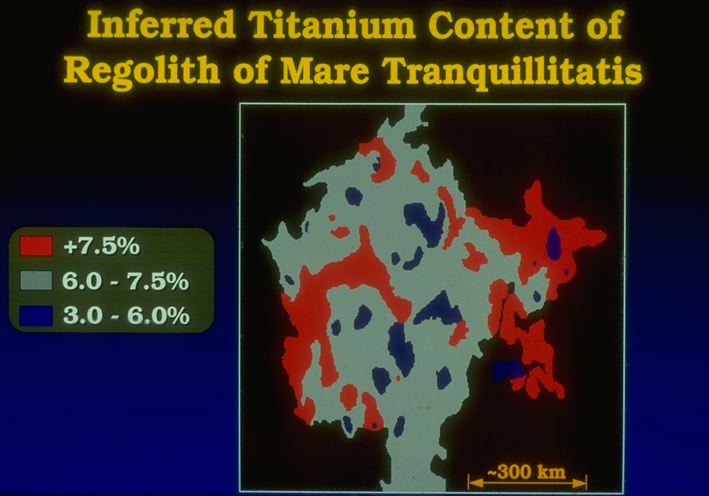 Inferred Titanium Content of Regolith of Mare Tranquillitatis
Inferred Titanium Content of Regolith of Mare Tranquillitatis
- The most favorable area for initial mine operations is 85,000 km2 in the northeast
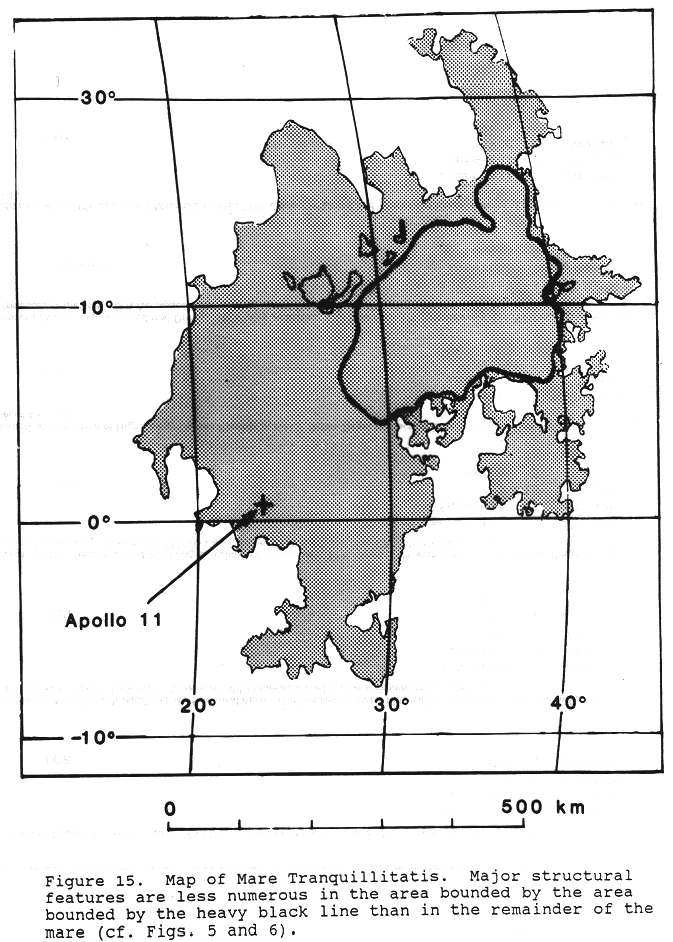
Most favorable mine area 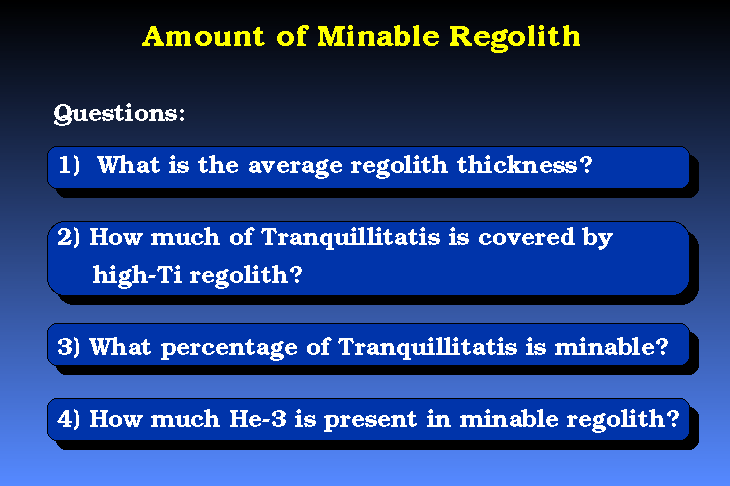
Amount of Minable Regolith 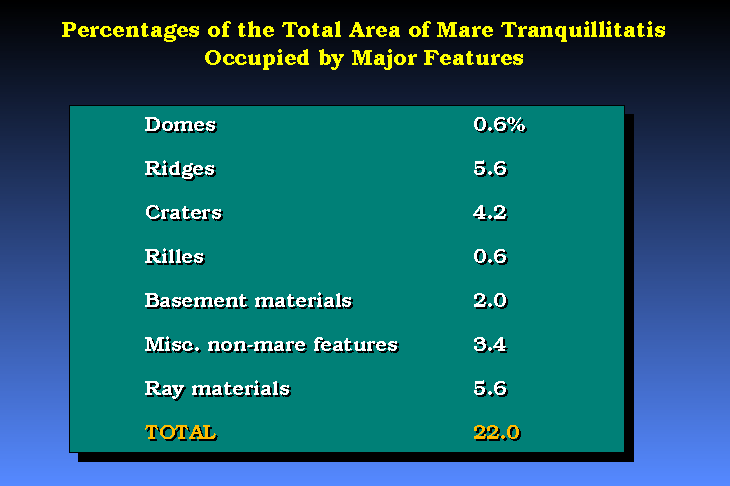
Percentage of the Total Area of Mare Tranquillitatis Occupied by Major Features 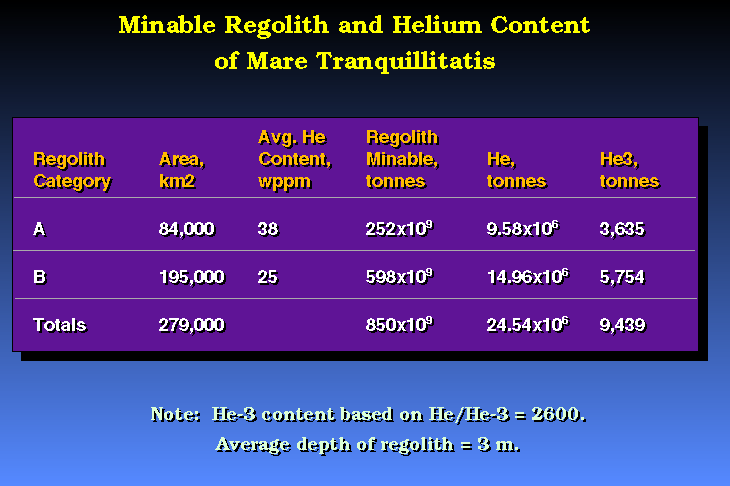
Minable Regolith and Helium Content of Mare Tranquillitatis
Rectilinear mining plan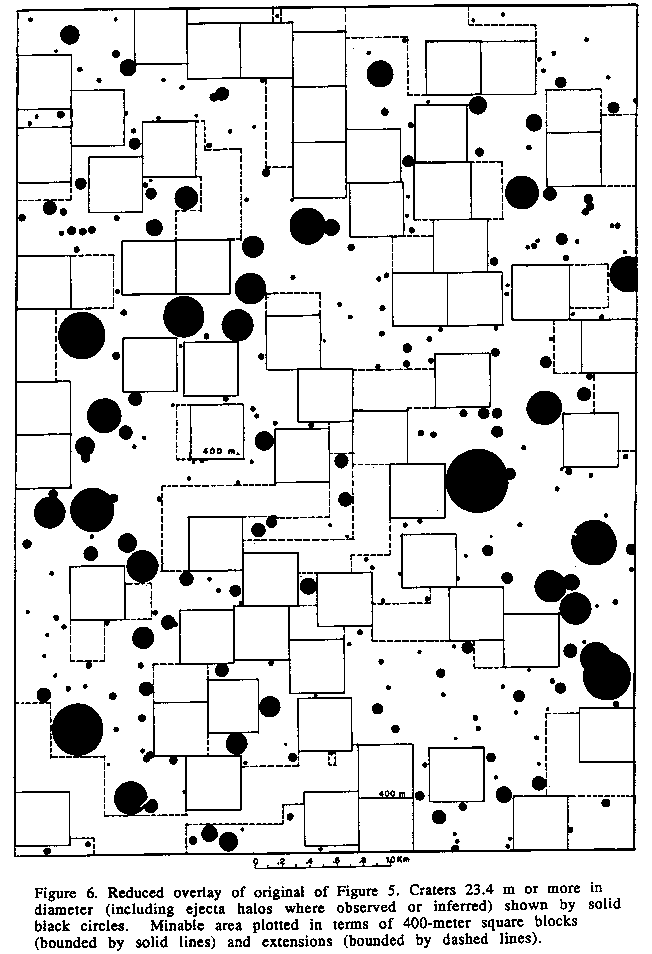
400m mining blocks 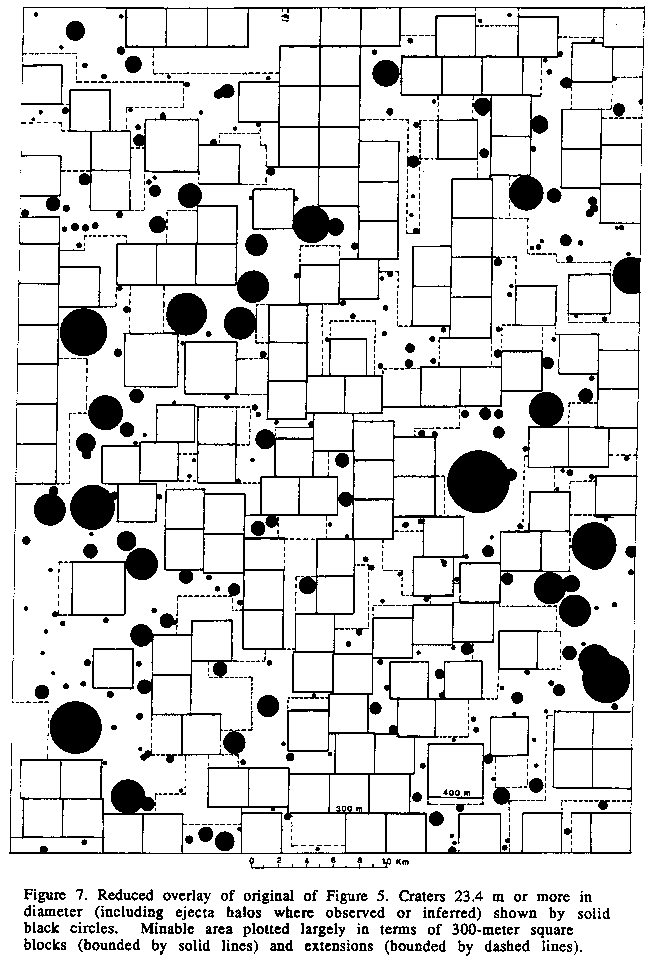
300m mining blocks 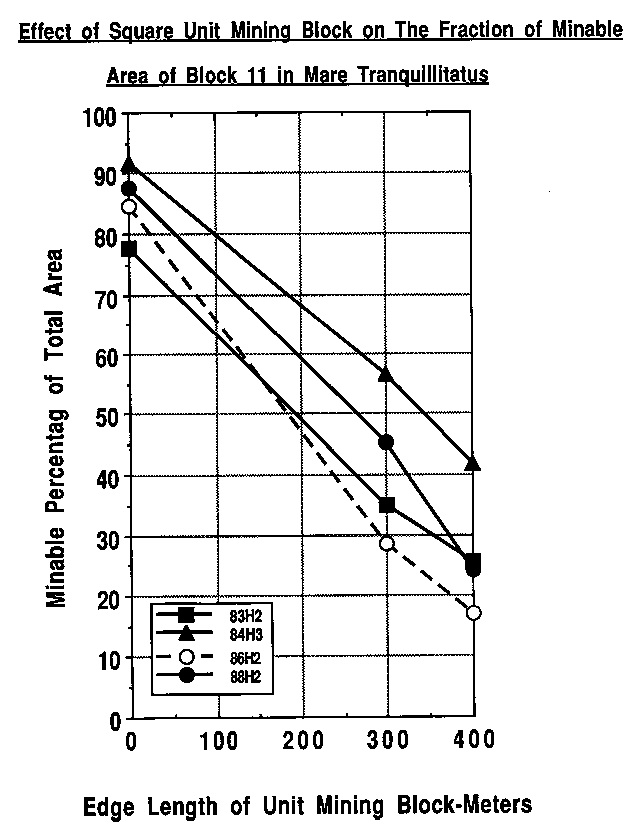
Minable percentage in relation to size of mining block
Spiral Mining (Schmitt, et al., 1992)
Another approach to mining in cratered terrain is that suggested by circular irrigation systems Artist view of lunar spiral
(NASA art)
Artist view of lunar spiral
(NASA art)
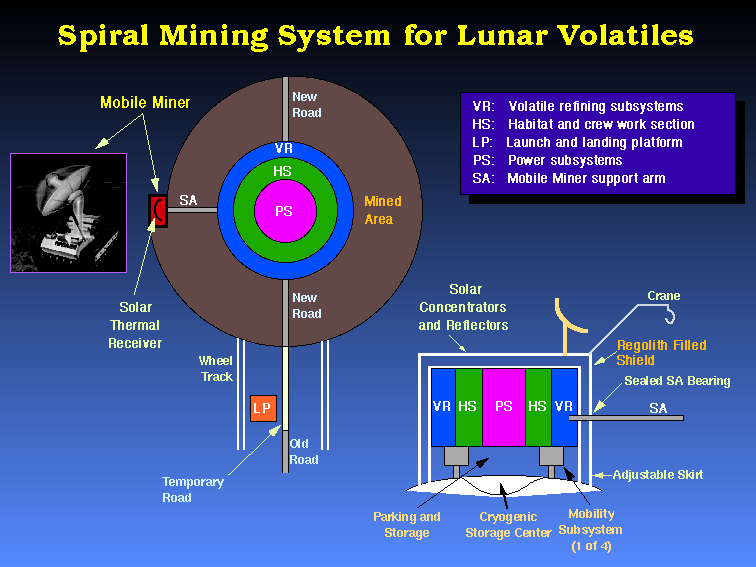 Spiral Mining system
Spiral Mining system
General Concept of Spiral Mining
- Mining progresses in a spiral, radially outward from a central, periodically mobile station.
- Regolith is beneficiated and volatiles are extracted and waste heat recovered in the miner
- Volatiles piped to central station for refining
Differences from Rectilinear mining- Electrical power and thermal power received from central station
- Tele-robotic operation possible along optical fiber
- Extracted volatiles pumped continuously to central station
- Refined volatiles can be shipped directly to users from central station
- Unsold volatiles can be stored under central station
- Routine maintenance and repair handled at central station
- Less demand on lunar base support means fewer or smaller lunar bases required.
Mobile Miner Characteristics: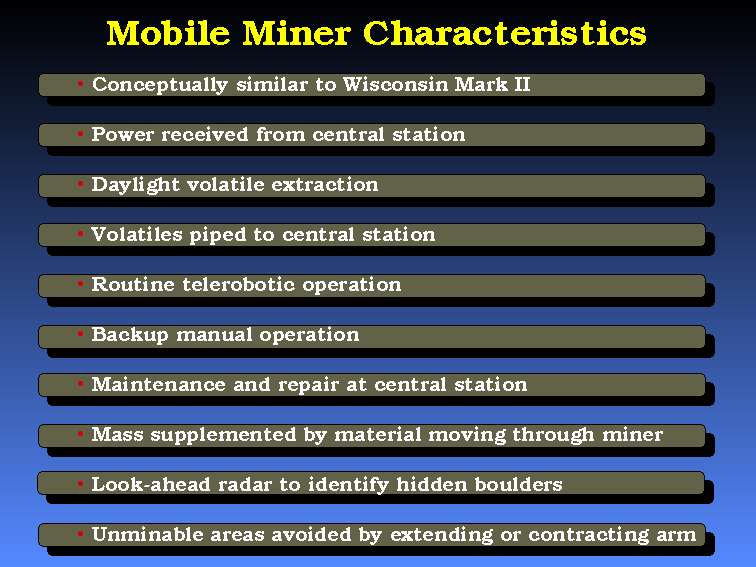 Mobile Miner Characteristics:
Mobile Miner Characteristics:
Central Station Characteristics: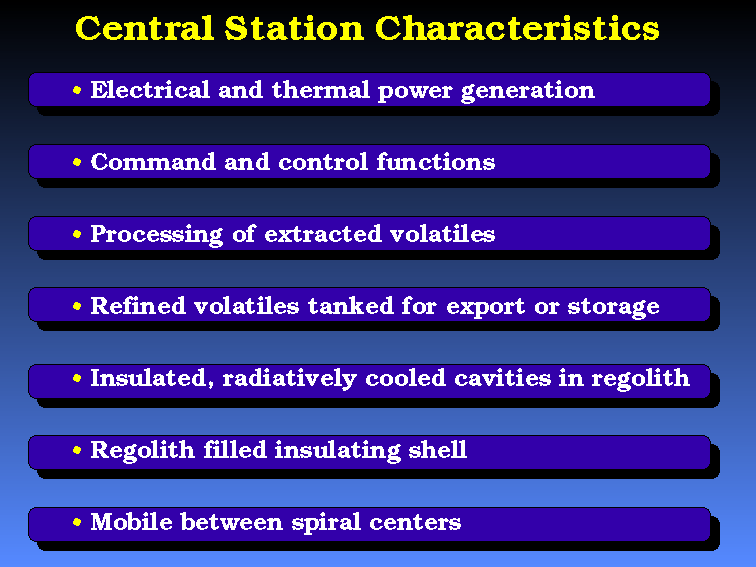 Central Station Characteristics:
Central Station Characteristics:
Standard Duty Cycle (solar thermal only)
- daytime: mining, beneficiation, and volatile extraction
- nighttime: volatile refining (use thermal radiation to deep space)
- with sufficient storage of solar energy (H2 + O2 = H 2O cycle) or with nuclear energy production rates could be doubled)
Permanent Support Base (Logistics base)
- location should maximize access to the highest grade, lowest cost reserves and to the regional resource base
- permanent science base
- permanent settlement (?)
Selection of first mine site
Mine Planning and Mining Concepts for Lunar Resources
RECTILINEAR MINING(Cameron, 1992)
Requirements for planning initial mining operations Requirements for selecting initial support base site
Questions:
1. Outline the types of geotechnical (geological engineering) data that
would be required to design a Mark II-type miner.
2. Define the basic characteristics required by a cryogenic storage system
placed within the lunar regolith and how could an impact crater be adapted
to contain such a system.
3. Outline the trade-off considerations necessary to be able to choose between
rectilinear and spiral mining concepts for mining 3He from the
lunar regolith.
Text:
Cameron, 1993, pages 3 (Objectives of an Exploration Program) through end
Schmitt, et al., 1992, pages 1163-1170
Neal, et al., 1988, pages 16-18, Table 2-3
References:
Agosto, W.N., 1985, Electrostatic concentration of lunar soil minerals,in W.W. Mendel, editor, Lunar Bases and Space Activities of the 21st Century, 453-464.
Cameron, E.N., 1993, Evaluation of the Regolith of Mare Tranquillitatis
as a Source of Volatile Elements, WCSAR-TR-AR3-9301-1, 15p.
Cameron, E.N., 1992, Helium Resources of Mare Tranquillitatis, Technical
Report, WCSAR-TR-AR3-9207-1, 67p.
Chamberlain, P.G., et al., 1993, A review of possible mining applications
in space, in Resources of Near-Earth Space, edited by J. Lewis, et al.,
University of Arizona Press, 51-68.
Ehricke, K. A., 1985, Lunar Industrialization and Settlement, in
W.W. Mendel, editor, Lunar Bases and Space Activities of the 21st Century,
p. 845, figure 3.
Kulcinski, G. L., Mogahed, E. A., Santarius, J. F., Sviatoslavsky, I. N., and Wittenberg, L. J., 1996, Impact of Lunar Volatiles Produced During He-3 Mining Activities, Paper AIAA-96-0490 in 34th Aerospace Sciences Meeting, january 15-18, 1996, Reno, NV.
Neal, V., et al., 1988, Extravehicular Activity at a Lunar Base, Report
on Advanced Extravehicular Activity Systems Requirements Definition Study,
NASA-17779.
Schmitt, H.H., et al., 1992, Spiral Mining for Lunar Volatiles, in
Engineering, Construction, and Operations in Space III (SPACE 92), edited
by W.Z. Sadeh, et al., v 1, 1162-1170.
Sviatoslavsky, I. N. and M. Jacobs, 1988, Mobile Helium-3 Mining System and its Benefits Toward Lunar Base Self-Sufficiency, in Engineering, Construction, and Operations in Space (SPACE 88), edited by S. W. Johnson and J. P. Wetzel, p. 310.
Back to Syllabus
 |
|
University of Wisconsin Fusion Technology Institute · 439 Engineering Research Building · 1500 Engineering Drive · Madison WI 53706-1609 · Telephone: (608) 263-2352 · Fax: (608) 263-4499 · Email: fti@engr.wisc.edu |
Copyright © 2003 The Board of
Regents of the University of Wisconsin System.
For feedback or accessibility issues, contact
web@fti.neep.wisc.edu.
|



